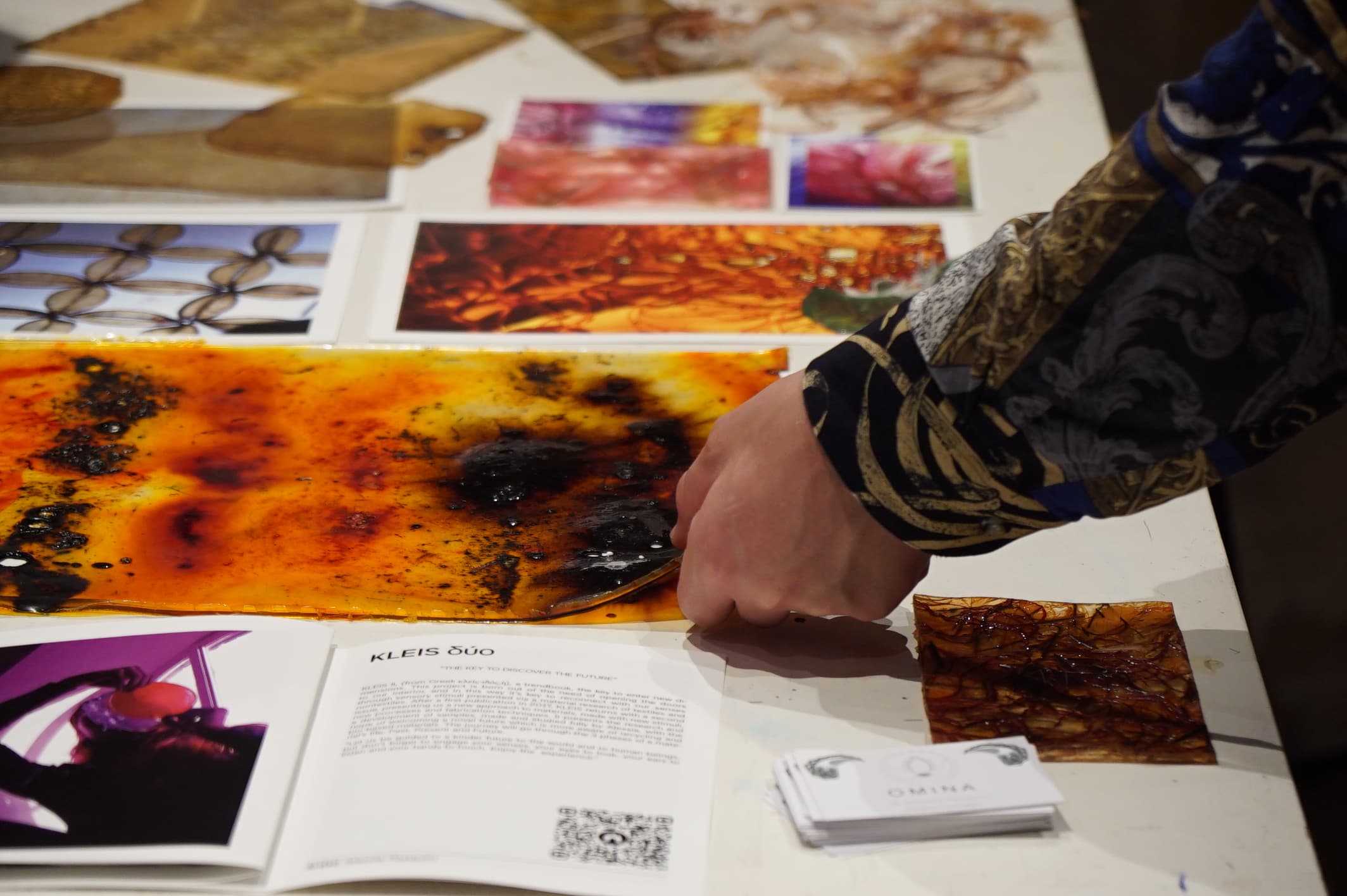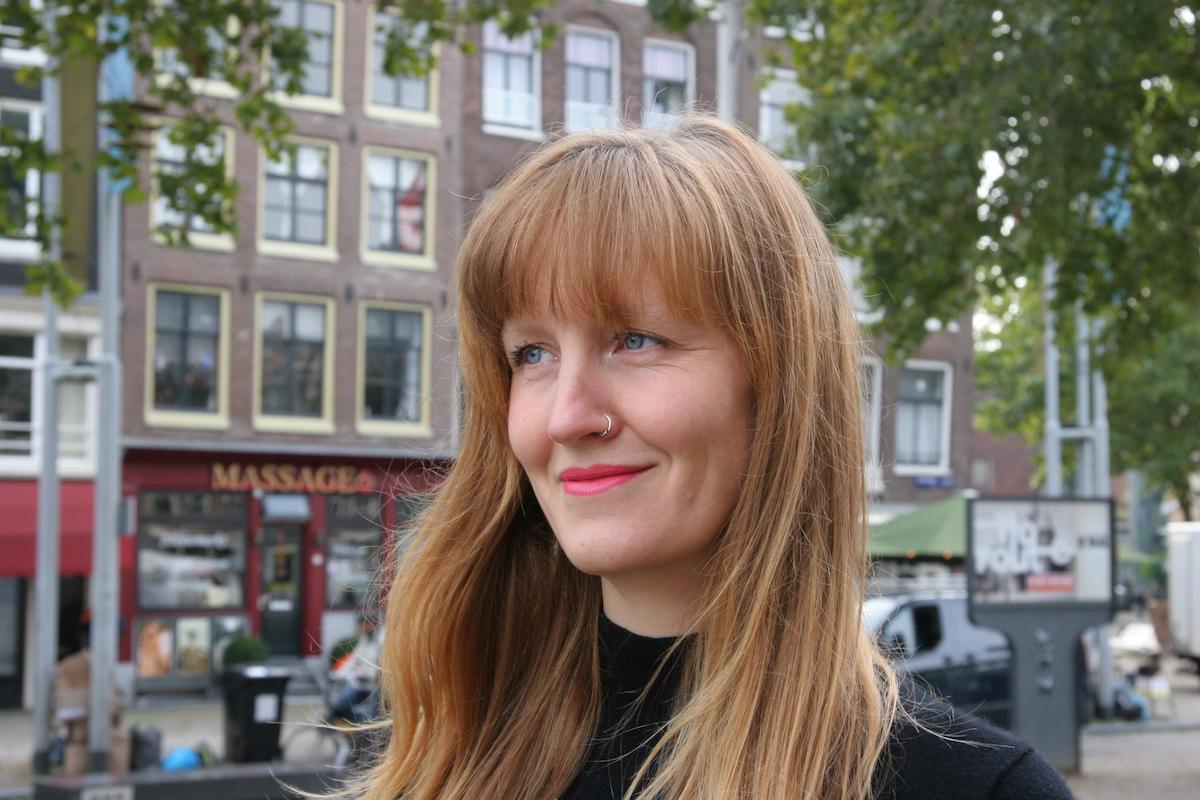In “You should know your history”: Reclaiming historical narratives through making, Séraphine Bittard delves into the ways history shapes identity and creativity. Inspired by personal and historical artifacts like a family daguerreotype and Hester Prynne’s scarlet letter, she reimagines the 17th-century stomacher. Through her work at Waag Futurelab, Bittard merges traditional craftsmanship with modern technology, creating a powerful reflection on the interplay between past, present, and future.
In the essay below, she shares her journey of uncovering and reinterpreting these narratives through making.
Hester Prynne’s stomacher
About a decade ago, while exploring my grandparents’ belongings in eastern France, I came across a remarkable artifact: a silvery metal plate, roughly 20 cm by 15 cm, with the faint silhouette of a man etched into its surface. Fresh out of film school at the time, I immediately recognized it—a daguerreotype, a photographic process invented by Louis Daguerre that became hugely popular in the mid-19th century. To this day, I still don’t know for sure who the man in the image was, other than that he was a member of my family several generations back. But what I remember vividly is the vertigo of holding that plate in my bare hands, and being struck by how real history was— so real that I could actually touch it, keep it for myself, use it, and why not, destroy it if I wanted to. Because it was mine.
Now, let’s take a few steps back in history, and a few steps forward into our time, where things are yet to exist. Because...why not? History is ours.
Making Stories from a Piece of Cloth
Around the time daguerreotypes were gaining popularity, an uninspired writer was working at the Custom House in Salem, Massachusetts. Between 1846 and 1849, Nathaniel Hawthorne spent his days overseeing goods at the port, enduring the bureaucratic and political atmosphere of the place. During this time, while rummaging through old records, he stumbled upon a physical artifact that would spark one of his most famous works: an embroidered letter “A” on a piece of faded red fabric, believed to have once belonged to a woman who had committed a moral transgression.
This tangible encounter with the past, similar to my own but better romanticized by Hawthorne, inspired him to write The Scarlet Letter. In the novel, the embroidered letter on Hester Prynne’s bodice becomes a complex symbol—representing both shame and empowerment in Puritan Boston, mid-17th century.
Hawthorne’s letter is not merely a mark of disgrace (A is for Adultery); it’s a luxurious artifact, crafted from red cloth and gold thread, standing out for its artistic beauty. In many ways, it becomes an extension of Hester’s identity, but also a reminder of the baroque splendor of the Old Continent, “a splendor in accordance with the taste of the age, but greatly beyond what was allowed by the sumptuary regulations of the colony.”
This idea of wearing history and intertwining it with one’s identity resonated deeply with me when I began working on my own project reimagining the 17th-century stomacher.
Blending History and Personal Narratives
Hester Prynne’s Scarlet Letter, pinned to her bodice, would likely have been part of a stomacher—a V-shaped panel worn by women from the late 15th century to the end of the 18th century. The stomacher adorned the front of a gown or bodice and was often intricately decorated with embroidery, jewels, pearls, or lace. Beyond its functional role in shaping the gown’s silhouette, the stomacher also served as a canvas for personal expression. Some featured elaborate patterns with symbolic motifs or emblems, while others were embroidered with scenes or messages. Like the letter “A” in Hawthorne’s tale, the stomacher became a part of a woman’s outward identity, a symbol of fashion and status that reflected the culture of its time.
Inspired by Hawthorne’s symbolic letter, I set out to reimagine the stomacher, paying homage to generations of women who had used it to communicate their stories. At the Waag Futurelab in Amsterdam, I designed a piece that fuses personal history with modern technology. My modern stomacher is made from an amalgamation of 35mm photo film, 3D-printed materials, and traditional fabric and thread. The film contains personal archives—photos of my mother, sister, and me from my childhood—capturing memories and personal narratives, which resonate with the concept of transgenerational memory. These images reflect the idea that stories and experiences passed down across generations shape one’s identity.
The 3D-printed components of the stomacher recreate 17th-century-inspired needlework patterns, blending historical craftsmanship with contemporary techniques. I chose roses as the central motif, echoing the rosebush in The Scarlet Letter, which, “by a strange chance, has been kept alive in history” against “the black flower of civilized society, a prison.” The photos, illuminated by LED strips integrated into the garment, mirror the glowing symbolism of Hester Prynne’s embroidered letter, which was believed to be “not mere scarlet cloth, tinged in an earthly dye-pot, but was red-hot with infernal fire, and could be seen glowing all alight.” In this way, my stomacher becomes a wearable artifact—a glowing fusion of past and present, embodying personal and collective histories.
Synesthesia and Innovation at the crossroads of History
This blend of old and new came to life at the Waag Futurelab, a place steeped in centuries of history and innovation. Housed in a building that once housed a surgeon’s guild, where 17th-century public dissections were performed, Waag is a space where history and technological advancement intersect. Rembrandt himself observed these dissections and immortalized one in his famous painting 'The Anatomy Lesson of Dr. Nicolaes Tulp (1632)'. Walking through these same halls, I was reminded of the hands and minds that built this city, explored scientific frontiers, and created masterpieces. It was in this historically rich environment that my stomacher came to life—a fusion of old-world craftsmanship and modern technology, with a significant influence from the Dutch Golden Age.
In many ways, this stomacher pays tribute to centuries of human innovation. From the invention of flexible photo film in the 1880s, made from triacetate cellulose and light-sensitive silver halide crystals, to the democratization of 3D printing, each era of technological progress is woven into this piece. Let’s not forget fabric, an innovation probably as ancient
as humanity itself. Just as holding my family’s daguerreotype made me feel connected to the past, this garment links me to the craftsmanship of those who came before while embracing the innovations of today.
Waag Futurelab is more than just a space for experimentation—it’s a place where the past and future meet. Traditional techniques are reimagined with modern tools, and history is brought to life. My stomacher, created from photo film and 3D-printed blackwork, is a testament to this intersection. It honors history while looking to the future, much like the spaces we inhabit and the stories we tell.
Disclaimer: This work was produced with the financial assistance of the European Union. The views expressed herein can in no way be taken to reflect the official opinion of the European Union.


